
Teaching and learning resources for the construction industry with NVQ and Diploma Assessment Criteria

An accident is often described as a
chance event or an unintentional act.
This description is not acceptable as
accidents do not ‘just happen’,
they do not ‘Come Out Of The Blue’,
they are caused!
A better definition of an
accident is therefore:
An accident is an event causing
injury or damage that
could have been avoided by
following correct
methods and procedures.

One of the most dangerous working environments is a construction site, due to assortment of materials used in the construction industry.
A Programme of Works is needed for the construction project to eliminate as far as possible any Health & Safety issues during construction, this is also backed up by Risk Assessments & Method Statements (RAM`s).
The reason why you slip is that there is too little friction or traction between the floor surface and your footwear.
Several factors could play a part in a slip accident here are just a few.
Wet spots like water also spilled liquidates, e.g. ( Paints, any container’s liquids ).
Oil and grease spots.
Mudded boots.
Plaster or Mortar on the floor.
weather hazards.
Smooth surfaces such as floors that have cleaned but still wet (needs appropriate slip sign).
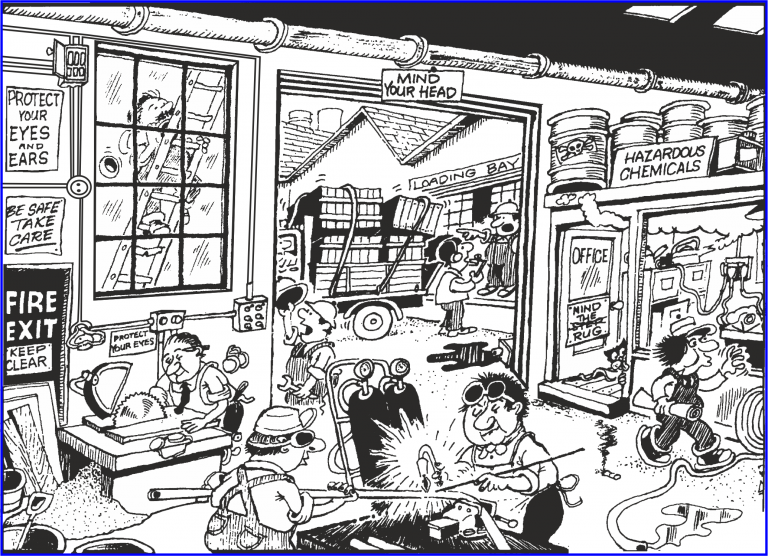
Trips happen when your foot strikes or hidden object causing you to lose your balance and eventually fall over here are some common causes of trip Hazards.
· Obstructed View
· Clutter In Your Way
· Wrinkled Carpeting
· Uncovered Cables
· Bottom Drawers Not Being Closed
· Uneven (Steps, Thresholds) Walking Surfaces
· Loose Tiles or Floorboards, Electrical Cables
· Nails In Timbers
· Shoe Laces Undone or Worn-Out Soles
· Poor Lighting Conditions Which May Distort Vision
· Small Movable Objects on The Floor Such as Off Cuts, Like Bricks Also Tools & Equipment Not in Its Proper Place.
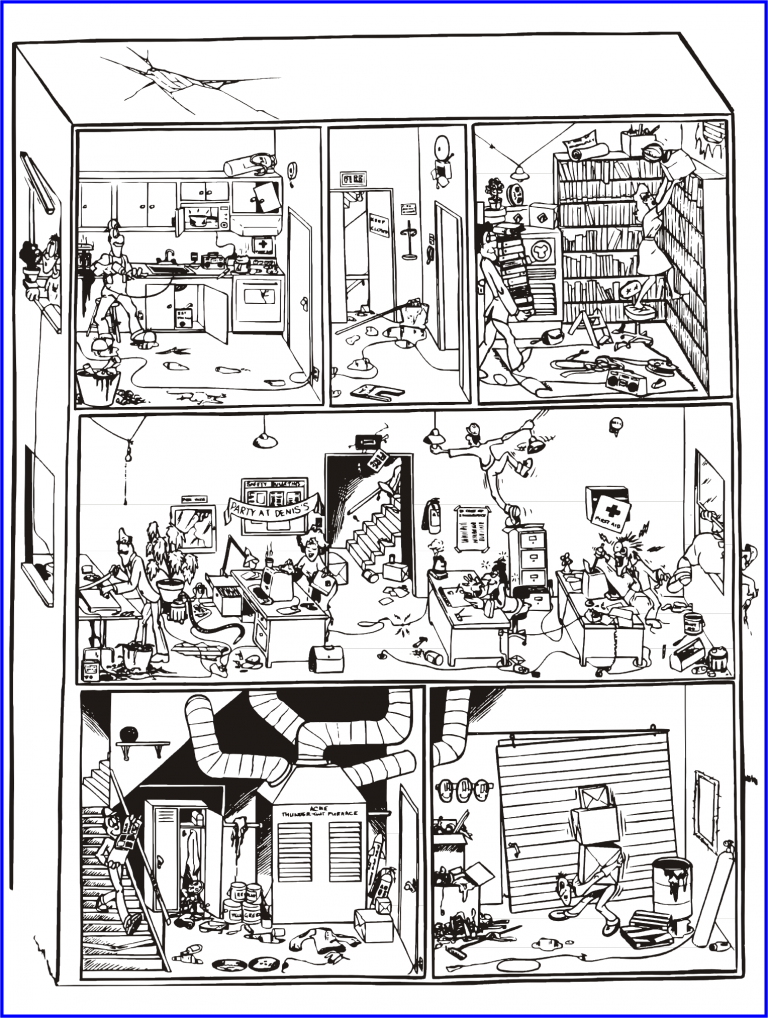
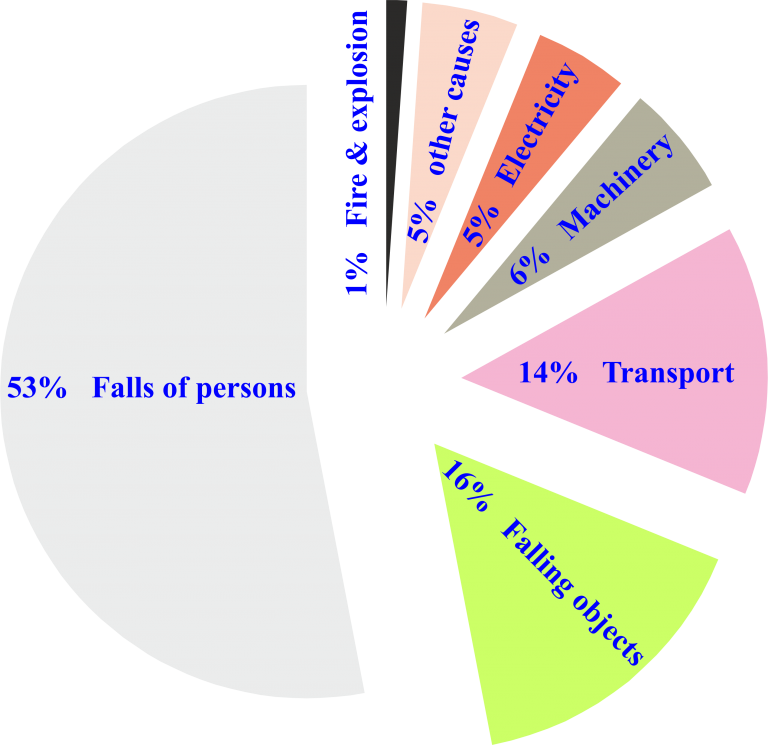
Causes of Fatal Accidents
Working at heights is a dangerous activity within the construction industry see above Pie Chart which was put together by Health & Safety Executive (H.S.E.) from Reported accidents (RIDDOR 95).
Reporting of Injuries, Diseases & Dangerous Occurrences Regulations
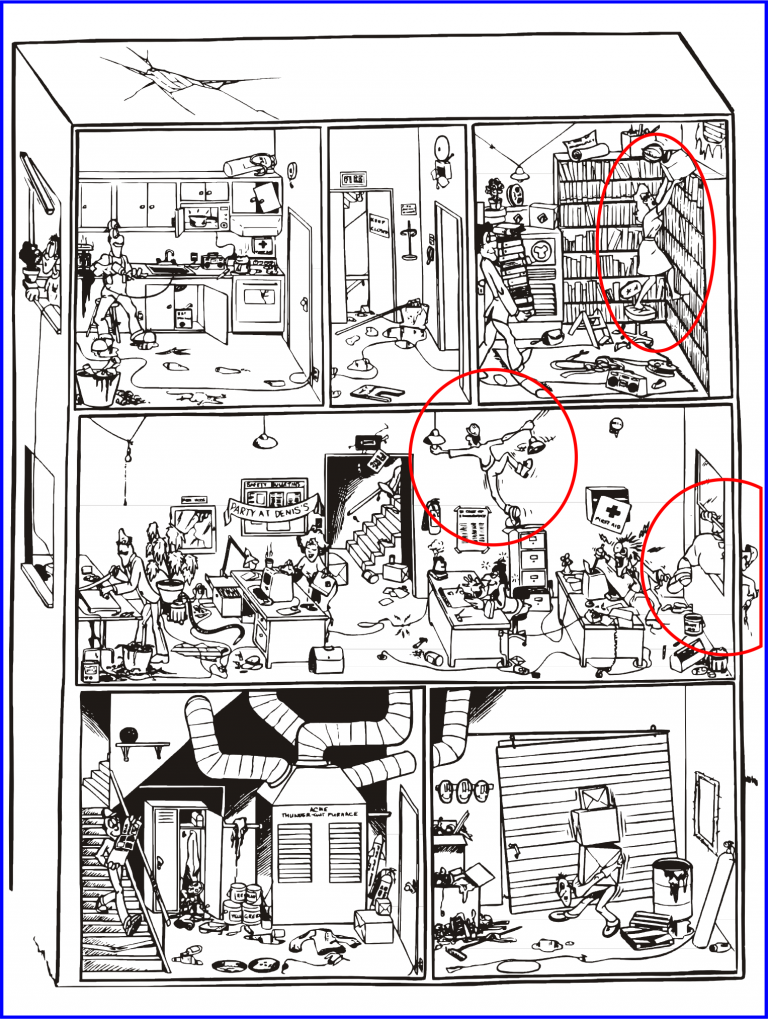
Falls Hazards
Good planning will hopefully eliminate working at height as far as possible, can the majority of the work be done on the ground level before fixing into position?
For example priming and coaching wood or metal for cladding, fascia board this will reduced the time working at heights.
Has the Access Equipment being checked by a competent person, (have they been trained and certificated with a CSCS card).
Has a programme of works eliminated other trades from working underneath the working area and have they got Safety Nets in place.
Working at heights is where you’re doing activity of ground-level, if you’re working next to avoid or canal but still on ground-level this is deemed to be working at heights as well.
Spot the Hazards in the picture above, you can see a number of working at height hazards highlighted in red.
Here are some other examples:
Hidden steps and opening edges, holes in floors
Sloping roofs and fragile roofs
Unsafe working platform
Unsafe ladders and steps
It is the employee’s responsibility to carry out work with Health & Safety in mind this involves Good Housekeeping, it may well be dead before you start and especially when you finish an activity you must clean up any minister you have created or any spills that could endanger other personnel on the construction site.
See the poster on the right on Good Housekeeping.
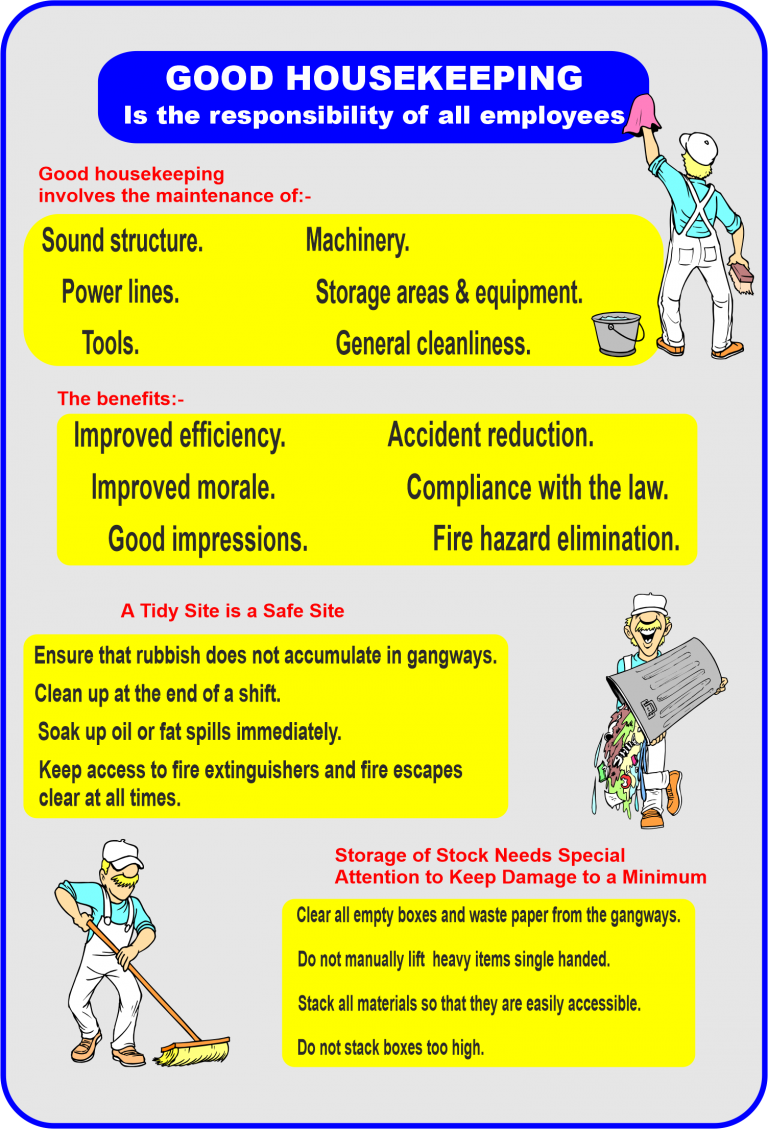
Additional learning resources for this unit can be found on the following links
Task A1: Health & Safety In Construction.
Task A2: The role of the Health & Safety Executive.
Task A3: Health & Safety Regulations.
Task A4: Responsibility for Health & Safety.
Task A6: Health & Safety Risks In Construction.
Task A8: Safety Sign Categories.
Task A10: Global Harmonized System Level 1.